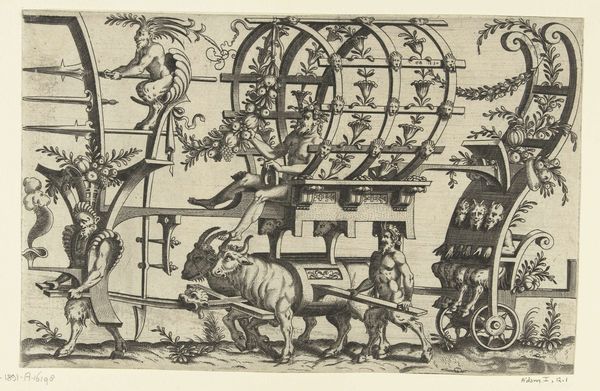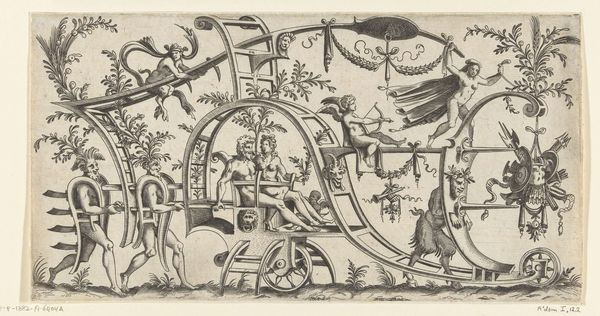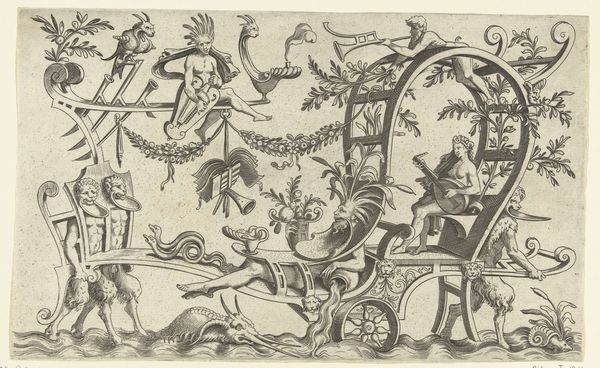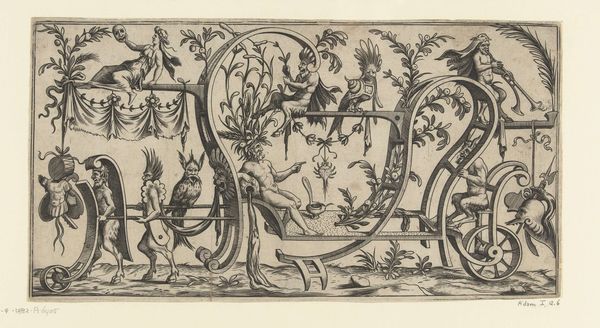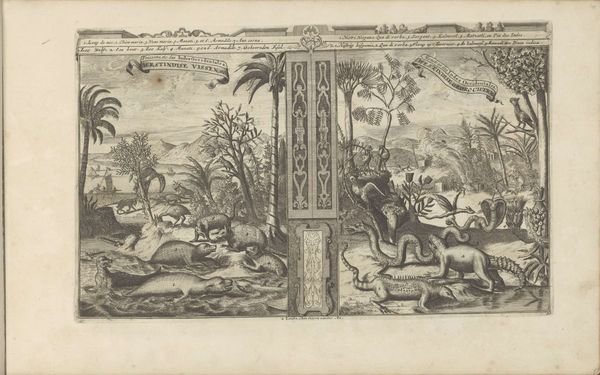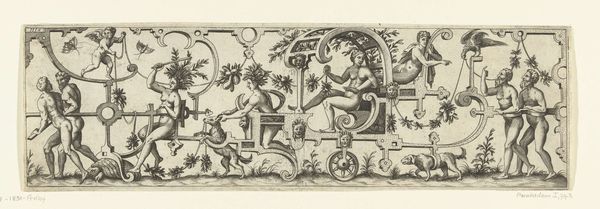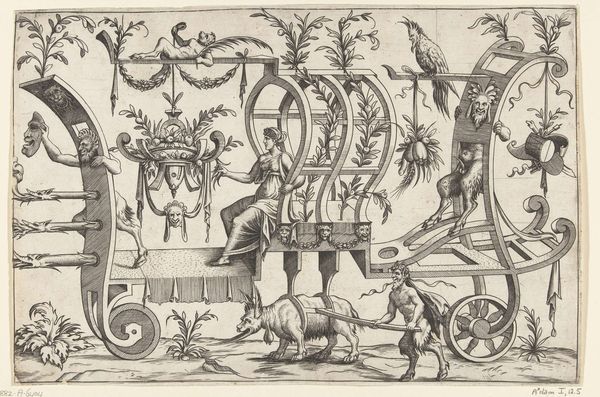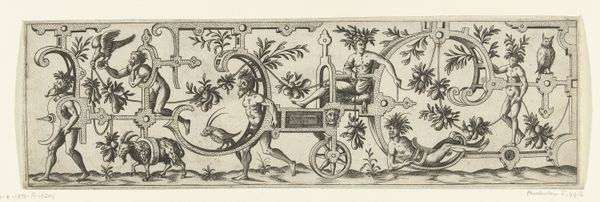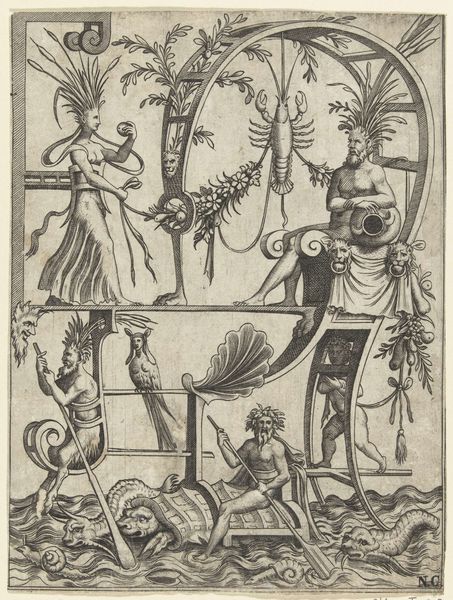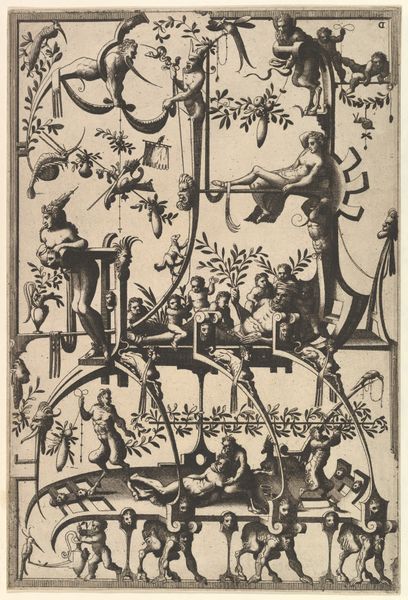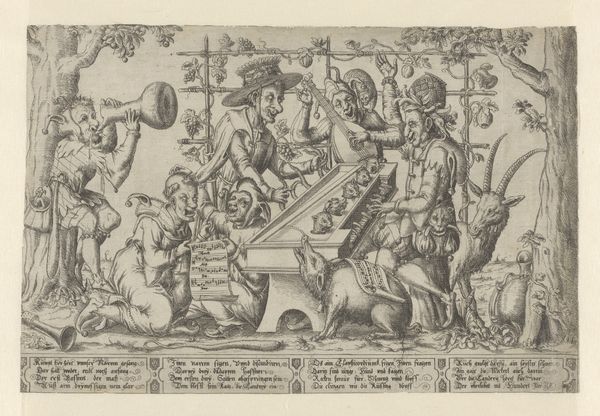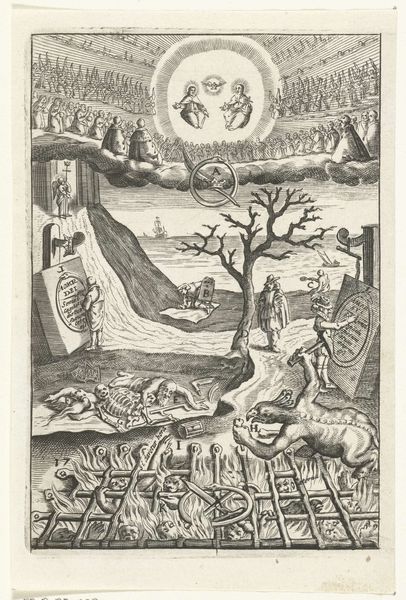
print, engraving
#
allegory
#
pen drawing
# print
#
pen illustration
#
pen sketch
#
figuration
#
11_renaissance
#
italian-renaissance
#
engraving
Dimensions: height 170 mm, width 267 mm
Copyright: Rijks Museum: Open Domain
Editor: This intricate print, titled "Triumph Car with a River God," dates back to 1550. It’s attributed to an anonymous artist and made with engraving. The chariot's decorations are incredibly elaborate; the more I look the more figures and flourishes I find! How would you interpret this piece? Curator: Looking at this through a materialist lens, I’m drawn to consider the socioeconomic conditions of printmaking in the 16th century. Engraving was a highly skilled, laborious process. These prints weren’t just aesthetic objects, but commodities that circulated widely, influencing taste and spreading ideas, which served the need for reproducible images. Editor: So, it’s not just the image, but its replicability that’s significant? Curator: Precisely. Who was the target consumer? Was it meant for an elite clientele or a broader audience hungry for accessible imagery? How did the division of labor within the print shop shape the final product? These factors are crucial to understanding its place in Renaissance society. How does that materiality affect your viewing? Editor: I hadn't considered that production angle before! It highlights how this artwork was both a product of artistic skill and part of a larger commercial network, something consumed not just admired from afar. Seeing it that way emphasizes the skilled craftsmanship and that helps understand the print’s cultural footprint beyond a beautiful image. Curator: Indeed. Understanding the means of production helps us deconstruct traditional hierarchies separating "art" from "craft," ultimately revealing the complex interplay between artistic vision and the material realities of its creation. Editor: Thanks, that new lens makes me see a more intricate network of factors at play, than just one artwork's inherent symbolic value. Curator: Exactly! And perhaps that’s what we should appreciate about such a relatively simple artwork today - the power of accessible imagery.
Comments
No comments
Be the first to comment and join the conversation on the ultimate creative platform.
